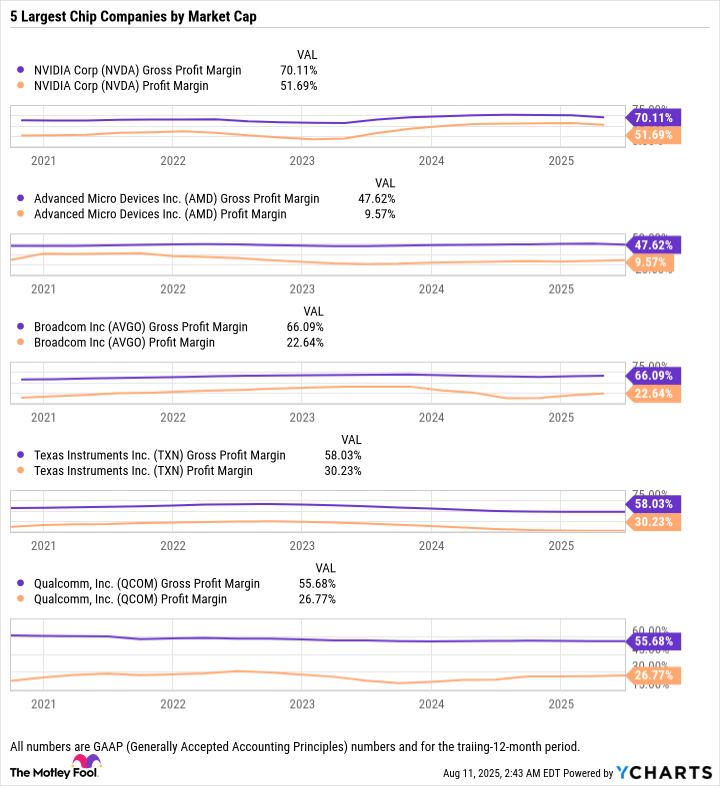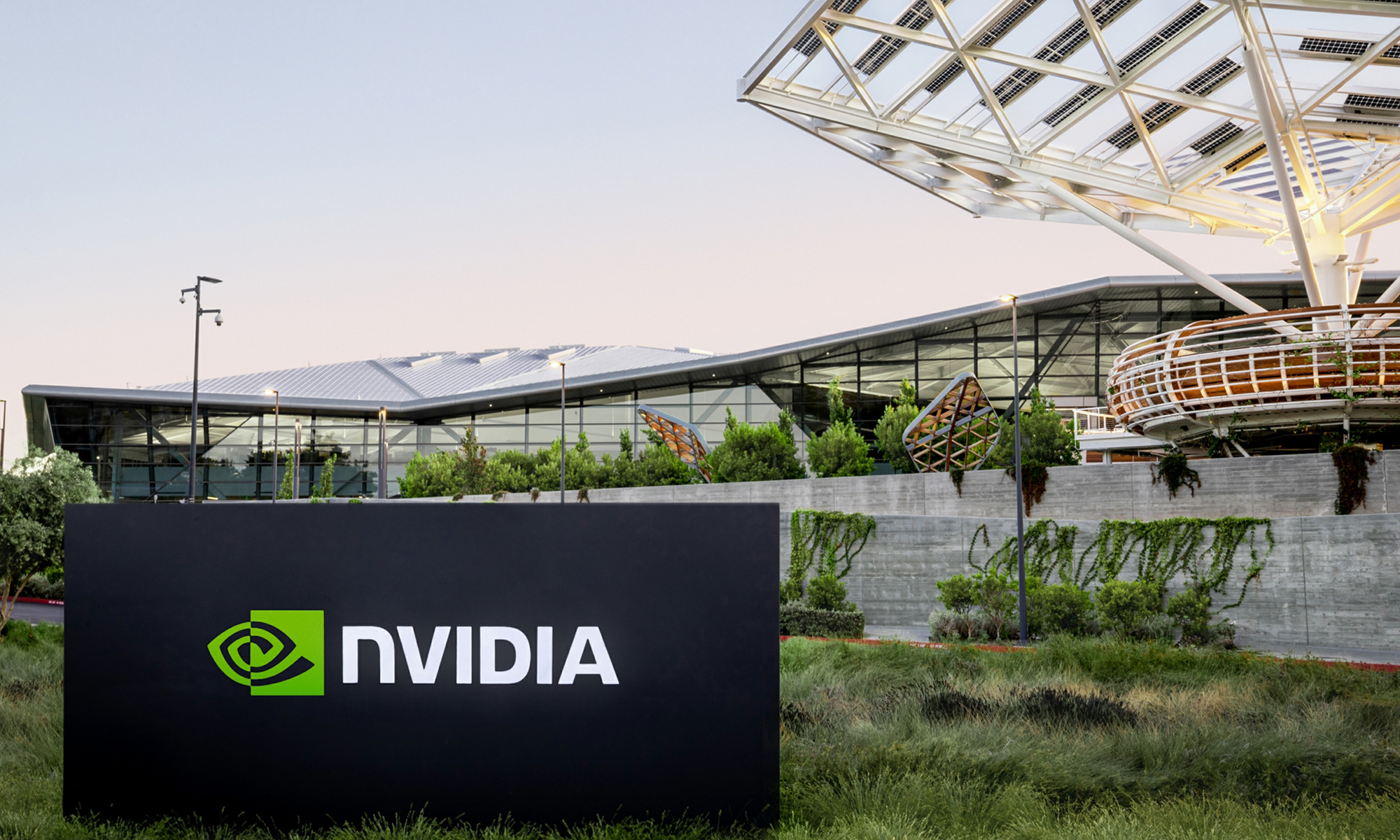Nvidia (NVDA 0.32%) and fellow graphics processing unit (GPU) maker Advanced Micro Devices, or AMD, have agreed to give the U.S. government 15% of their revenue from sales of their respective artificial intelligence (AI) data center chips designed for the China market in exchange for obtaining export licenses for these chips, according to the Financial Times, which first reported the story on Sunday night.

Image source: Getty Images.
The 15% AI chip revenue deal
The U.S. Commerce Department began issuing export licenses for Nvidia's H20 chip and AMD's MI308 chip on Friday, the Financial Times (FT) reported on Friday.
Nvidia provided a statement to the FT after it broke the government deal story on Sunday night that included the following: "We follow rules the U.S. government sets for our participation in worldwide markets."

NASDAQ: NVDA
Key Data Points
Background on Nvidia's H20 chip
Nvidia had designed the H20 AI-enabling GPU specifically for the Chinese market after earlier U.S. export controls, enacted under the administration of President Joe Biden, meant it couldn't sell its more advanced data center AI chips to China.
In mid-April, the Trump administration expanded the restrictions to include the H20. Nvidia immediately halted its sales and took a charge of $4.5 billion on its Q1 results for H20 inventory and purchase commitments.
Then in mid-July, Nvidia emailed investors who subscribe to the company's news and said it was "filing applications to sell the Nvidia H20 GPU again. The U.S. government has assured Nvidia that licenses will be granted, and Nvidia hopes to start deliveries soon."
At the time, there was no mention of giving the government a 15% cut of H20 revenue as a condition for obtaining export licenses.
How will Nvidia's revenue be affected by this deal?
We can get an estimate as to how this deal will affect Nvidia's financial results by looking at the company's fiscal first quarter, which ended on April 27.
In that quarter, Nvidia sold $4.6 billion in H20 chips to China prior to the start of the export controls in mid-April. It said it was unable to ship $2.5 billion in H20 chips that it had already produced due to the export controls. So, had the restrictions not existed, Nvidia would have sold $7.1 billion in H20 chips to China customers in Q1. This amounts to 15.2% of $46.6 billion, which is what its total revenue would have been, absent the export controls.
Over 15% of its total revenue is significant, so you can see the importance of Nvidia's China data center business.
For its fiscal Q2 (which ended July 27), investors should expect Nvidia to report no sales of its H20 chip, because the export restrictions were in place the entire quarter. However, H20 sales should fully rebound in fiscal Q3 (late July to late October).
When Nvidia provided Q2 guidance, it estimated that it would lose about $8 billion in H20 chip sales due to the export controls. So, keeping with roughly the same sequential quarter growth, let's assume Q3 H20 sales will be about $9 billion. In this case, Nvidia would pay the U.S. government $1.35 billion, which is 15% of $9 billion.
While $1.35 billion seems like a huge number, it's only a small percentage of Nvidia's overall quarterly revenue. In Q1, Nvidia's total revenue was $44.1 billion -- and it would have been $46.6 billion, had it not "lost" sales of $2.5 billion due to the export restrictions. That $1.35 billion is only 2.9% of $46.6 billion. But the actual Q3 percentage will be smaller because Nvidia's revenue will be higher in Q3 than Q1.
A revenue loss of somewhere between 2% to 3% of total sales is a very minor speed bump. Moreover, it's a much better situation than having no H20 sales.
How will Nvidia's profitability be affected by this deal?
Data by YCharts. Nvidia is much more profitable than other major chipmakers. It can easily absorb giving the government a 15% cut of its H20 revenue. All numbers are generally accepted accounting principles (GAAP) numbers.
Giving the government a 15% cut of H20 sales revenue should also negatively affect Nvidia's bottom line. But it should be an extremely minor dent, because Nvidia's data center platform is amazingly profitable. On that note, Nvidia overall is amazingly profitable.
Nvidia doesn't break out its profitability by platform, so we'll have to use its overall numbers. In Q1, Nvidia's adjusted gross margin (gross profit divided by revenue) absent the $4.5 billion H20-related charge was 71.3%. The company provided its adjusted earnings per share (EPS) absent the charge, so I could calculate adjusted net income absent the charge and then from that calculate adjusted net profit margin (net income divided by revenue) absent the charge -- which would have been 56.1%.
In other words, Nvidia converts more than half of its revenue into adjusted profits in a typical quarter, which is just phenomenal. It can easily absorb slightly less profitability on its H20 chips, which, again, account for roughly 15% of its total revenue in a typical quarter.
In short, Nvidia stock's strong upward trajectory should not be hurt by the company having to give the government a slice of its H20 sales.






